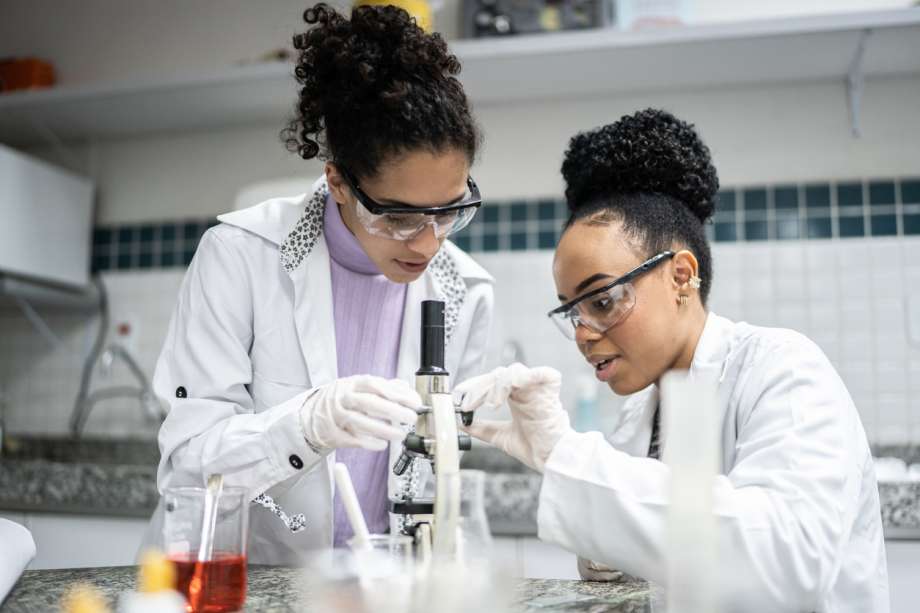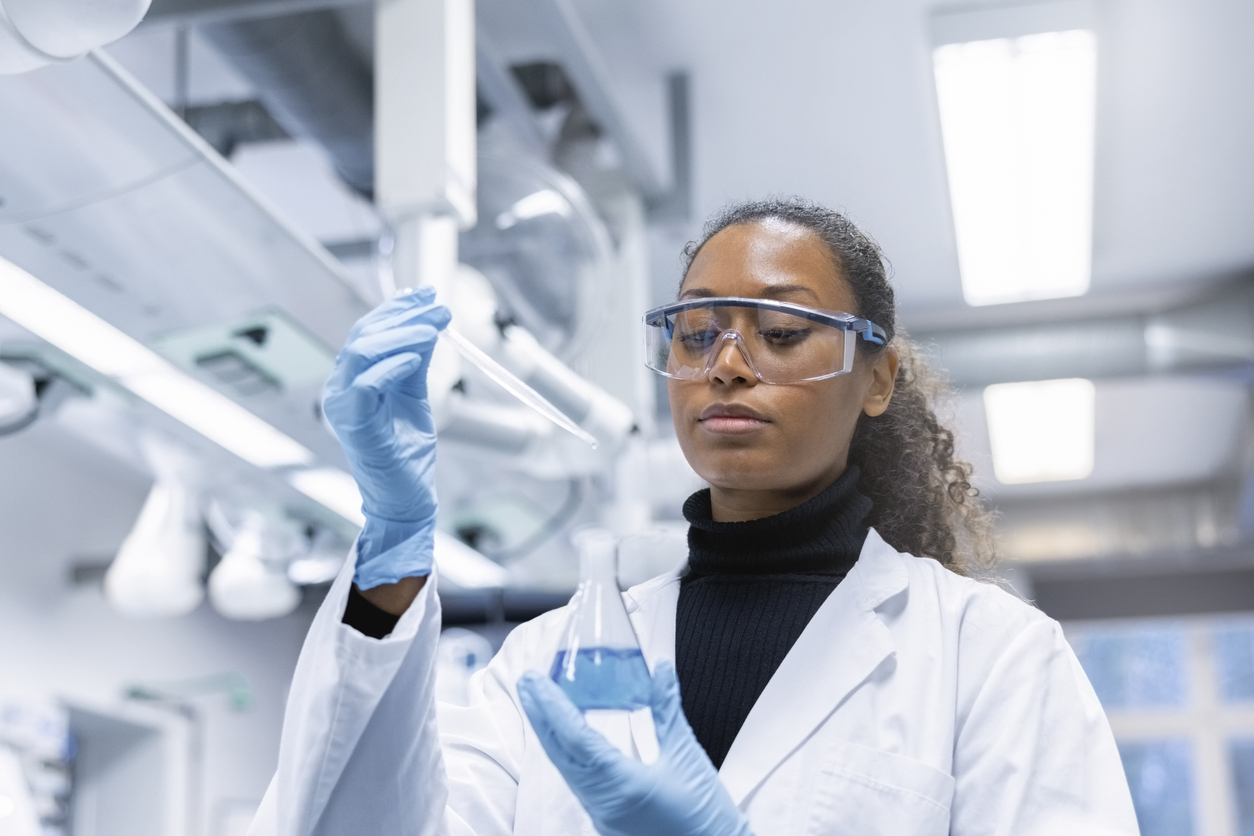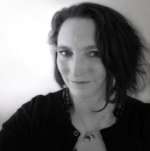Black Female Scientists That Have Shaped US History

February 11 2023 is the International Day of Women and Girls in Science. And in the United States and Canada, February is also Black History Month (it’s October in the UK and Ireland).
What better way to celebrate than by recognizing some trailblazing Black female scientists and their achievements?

Alice Ball, MS
Lived: 1892 – 1916
Fields of Activity: Chemistry, Medicine
Biochemist Alice Ball earned Bachelor of Science degrees in pharmaceutical chemistry and pharmacy from the University of Washington in 1910 and 1914, respectively. In 1915, she earned a Master’s Degree from the University of Hawaii, becoming the first woman, the first Black woman, and the first African American person to do so.
Inspired by her research, the Assistant Surgeon at the Leprosy Investigation Station of the U. S. Public Health Service in Hawaii asked her to research the chemical properties of Chaulmoogra oil, with the hope of developing a treatment for the disease. Ball figured out how to turn the oil into an effective injectable treatment using the “Ball Method.”
Ball’s product would remain the only treatment for leprosy until 1940.
Patricia Bath, MD
Lived: 1942 – 2019
Field of Activity: Medicine
If you can see clearly, you may have Dr. Patricia Bath to thank.
Dr. Patricia Era Bath was an ophthalmologist, inventor, and philanthropist. After receiving her MD from Howard University College of Medicine in Washington, DC, she became a researcher in pediatric surgery.
After the assassination of Martin Luther King, Jr. in 1968, Bath dedicated herself to economic justice, working with the Poor People’s Campaign.
Following an internship at Harlem Hospital Center, where she observed a disproportionate number of blind patients, she accepted a fellowship from Columbia University to study eye care services at Harlem Hospital, which did not have any staff ophthalmologists.
Her research convinced Columbia University professors to operate on blind patients at Harlem Hospital Center for no charge. Bath was among the doctors who performed the first eye surgery there.
Bath also invented and patented the laser phaco probe, which improved laser cataract surgery. She holds four patents related to cataract surgery. Bath also founded the American Institute for the Prevention of Blindness.
Alexa Canady, MD
Lived: 1950 – Present
Field of Activity: Medicine
Alexa Canady is the first Black woman neurosurgeon.
Specializing in pediatric neurosurgery, she received her medical degree from the University of Michigan. She served as the chief of neurosurgery at Michigan’s Children’s Hospital from 1987 to 2001.
In 1989, Canady was inducted into the Michigan Women’s Hall of Fame, and in 1993, she received the American Medical Women’s Association President’s Award.
Mamie Phipps Clark, BA, MA, Ph.D.
Lived: 1917 – 1983
Field of Activity: Psychology
Mamie Phipps Clark received her Bachelor of Arts and Master of Arts degrees from Howard University, and her Ph.D. in experimental psychology from Columbia University. Her work focussed on the emotional development of Black children, particularly the development of racial identity and sense of self.
Clark’s most famous research was the Doll Experiment, conducted with her husband and research partner, Dr. Kenneth Clark. This experiment showed how prejudice, discrimination, and segregation harm the self-esteem of African American children and was part of Dr. Kenneth Clark’s testimony in Brown vs. the Board of Education.
Marie Maynard Daly, BS, MS, Ph.D.
Lived: 1921 - 2003
Fields of Activity: Biochemistry, Medicine
Marie Maynard Daly received her Bachelor of Science Degree from Queens College in New York City, her Master of Science from New York University, and her Ph.D. in chemistry from Columbia University.
Daly performed some of the earliest research on cholesterol and hypertension and the effects of diet on the heart and circulatory system. She was the first to discover that high blood pressure leads to atherosclerosis. Her research also showed that dietary cholesterol leads to clogged arteries.
Watson and Crick, who won the 1962 Nobel Prize for describing the structure of DNA, cited Daly’s work as contributing to their discovery. In addition to a distinguished academic career, she worked tirelessly to increase university enrolment for Black women, and to promote African American advancement in the sciences.
Annie Easley, BS
Lived: 1933 – 2011
Fields of Activity: Mathematics, Computer Science, Aerospace Engineering
Aerospace engineer Annie Easley was one of the first African Americans to work at NASA. Her work concentrated on energy, alternative energy, and rockets. She was a leader on the team developing software for the Centaur high-energy rocket stage. That work would lay the technological foundations for military, communications, and weather satellites, as well as space shuttle launches and the 1997 flight of the Cassini probe to Saturn.
Easley was inducted into the Glenn Research Hall of Fame in 2015, and in 2021, the International Astronomical Union named a moon crater after her.
Bessie Blount Griffin, Nurse
Lived: 1914 – 2009
Fields of Activity: Inventing, Physical Therapy, Forensic Science
Bessie Blount Griffin was a nurse and physical therapist who invented a range of exercises and assistive devices for amputees. Her inventions included a self-feeding apparatus, a neck frame for injured patients, and the emesis basin that hospitals still use today. She earned several patents and was a colleague of Thomas Edison.
Griffin was also the founder of medical graphology – the idea that handwriting can reveal information about a person’s state of health. She worked with the police in numerous jurisdictions in the US and overseas, and ran her own forensic consulting business for twenty years until retiring at the age of 83.
Mary Jackson, BS
Lived: 1921– 2005
Fields of Activity: Mathematics, Aerospace Engineering
After receiving a Bachelor’s degree in mathematics and another in physical science from Hampton University, Mary Jackson was recruited to work at the National Advisory Committee for Aeronautics (NACA), the predecessor to NASA. She began as a research mathematician, and was soon promoted to engineer, and then aerospace engineer. She would go on to author and co-author 12 scientific papers for NASA.
Jackson was NASA’s first Black female engineer. In the later part of her career, she would work as the Federal Women's Program Manager in the Office of Equal Opportunity Programs, helping women and minorities to develop their careers in science and engineering.
Jackson was one of the Black women scientists whose story was told in the book (and later film) Hidden Figures.
Shirley Ann Jackson, Ph.D.
Lived: 1946 – Present
Field of Activity: Physics
Physicist Shirley Ann Jackson was the first Black woman to earn a Ph.D. at the Massachusetts Institute of Technology (MIT), and the second African American woman to earn a Ph.D. in Physics. In 2002, Discover magazine voted her among the 50 most important women in science.
In 1995, Jackson became the first woman and the first African American to serve as chair of the Nuclear Regulatory Commission. Four years later, she became the first female and the first African American president of the Rensselaer Polytechnic Institute, where she has raised over one billion dollars for various philanthropic causes.
In 2014, Jackson was awarded the National Medal of Science.
Mae Jemison BS, BA, MD
Lived: 1956 – Present
Fields of Activity: Medicine, Engineering, Space
After earning a Bachelor of Science in chemical engineering from Stanford University and a Doctor of medicine from Cornell University’s medical school, Mae Jemison worked as a physician, serving refugees in Thailand, working for Flying Doctors in East Africa, and supervising the pharmacy, laboratory, and medical staff for the Peace Corps.
She applied to NASA’s astronaut training program in 1985, and in 1987, became the first African American woman accepted for astronaut training. Before her launch in 1992, Jemison worked for NASA in the Shuttle Avionics Integration Laboratory (SAIL), developing space shuttle software. Her mission aboard the STS-74 ran from September 12 to 20, 1992.
Since leaving NASA in 1993, Jemison has turned her considerable talent and ambition toward philanthropy.
Katherine Johnson, BS
Lived: 1918 – 2020
Fields of Activity: Mathematics, Aerospace Engineering
Another ‘Hidden Figure’, mathematical prodigy Katherine Johnson’s calculations of orbital mechanics ensured the success of the first US crewed space flight, and several thereafter. She was one of the first Black women to work as a scientist for NASA and worked there for 33 years.
Johnson earned a Bachelor of Science from West Virginia State University, and was the first African American woman to attend graduate school at West Virginia University.
In 2015, President Obama awarded Johnson the Presidential Medal of Freedom. She received the Congressional Gold Medal in 2019.
Flemmie Pansy Kittrell, BS, MS, Ph.D.
Lived: 1904 – 1980
Fields of Activity: Nutrition, Child Development
After graduating high school with honors, Flemmie Pansy Kittrell earned a Bachelor of Science Degree from Hampton Institute, and a Master of Science and Ph.D. in Nutrition from Cornell University. She was the first African American woman to earn a Ph.D. from Cornell, and a Ph.D. in nutrition from any institution.
Kitttrell’s work in Home Economics focussed on low-income and minority families in small towns and rural areas. In 1947, she led a group of researchers to Liberia to research malnutrition. Her work led to changes in agricultural processes there and in other countries. She continued to travel the world under the auspices of various NGOs and was also a Fulbright Scholar.
Under Kittrell’s leadership, Howard University became a leader in nutrition and child development. And in the 1960s, Kittrell founded the Head Start program.
Gloria Twine Chisum, BS, MS, Ph.D.
Lived: 1930 – Present
Fields of Activity: Psychology, Inventing
Gloria Twine Chisum earned her Bachelor's and Master of Science degrees in Psychology from Howard University and her Ph.D. from the University of Pennsylvania.
Between 1965 and 1980, Chisum led the Vision Laboratory. After this, she led the Environmental Physiology Research Team. Her work led to the creation of protective goggles for pilots, as well as eyewear that protects against nuclear explosions.
Jewel Plumber Cobb, BA, MS, Ph.D.
Lived: 1924 – 1917
Fields of Activity: Biology, Zoology, Medicine
After earning her Ph.D., Jewel Plumber Cobb worked simultaneously as a teaching fellow at New York University, and as a researcher for the National Cancer Institute at Harlem Hospital.
She would go on to work as a professor of Zoology at Connecticut College and become that institution’s first African American Dean. While at Connecticut College, she worked to increase opportunities for Black students to study medicine. In 1981, she became President of California State University at Fullerton.
Cobb’s research focussed on the relationship between melanin and skin damage. She also discovered that methotrexate was an effective treatment for certain types of cancer. To this day, methotrexate remains an ingredient in chemotherapy.
Margaret James Strickland Collins, BS, Ph.D.
Lived: 1922 – 1996
Fields of Activity: Zoology, Entomology
Child prodigy Margaret Collins started university at age 14, earning a Bachelor of Science degree in Biology. She earned her Ph.D. from the University of Chicago, becoming the only Black female zoologist and entomologist in the US.
She served as president of the Entomological Society of Washington, a research associate at the Smithsonian Institution, and a professor at numerous universities. Collins was also a tireless civil rights advocate.
Patricia Suzanne Cowings, BA, MA, Ph.D.
Lived: 1948 – Present
Fields of Activity: Psychology, Medicine
Patricia Suzanne Cowings earned her Ph.D. in psychology from the University of California at Davis. But it was an engineering class she took during her graduate studies that would alter the course of her career.
After graduating, Cowings undertook research at the NASA Ames Research Center, where she developed and patented the Autogenic Feedback Training Exercise Method. This method enables people to voluntarily control bodily functions such as blood pressure.
Using her method, she trained astronauts aboard the MIR Space Station to control both blood pressure and motion sickness. Her work also helps search and rescue pilots, as well as patients with nausea, dizziness, and fainting.
Christine Voncile Mann Darden, Ph.D.
Lived: 1942 – Present
Fields of Activity: Engineering, Mathematics, Aeronautics
Over the course of her more than 40 years with NASA, Christine Darden researched supersonic flight and sonic booms. She was the first African-American woman at NASA’s Langley Research Center to be promoted to the top rank in the federal civil service.
Darden is one of the Black female scientists whose story is told in the book Hidden Figures. She won the Congressional Gold Medal in 2019.
Evelyn Boyd Granville, Ph.D.
Lived: 1924 – Present
Fields of Activity: Mathematics, Physics, Astronomy
Evelyn Boyd Granville’s passion for mathematics, astronomy, and theoretical physics led her to become the second African American female to earn a Ph.D. from an American university.
After receiving her mathematics degree from Yale, she worked for the National Bureau of Standards, worked on projects for NASA while at IBM, and calculated space trajectories at the Data reduction Center of Space Technology Laboratories. She continues to advocate for minorities in STEM fields, as well as to promote STEM education.
Betty Harris, BS, MS, Ph.D.
Lived: 1940 – Present
Field of Activity: Chemistry
If you enjoy flying safely, thank Dr. Betty Harris.
Chemist Betty Harris’s work has focussed on the chemistry of explosives. She holds the patent for a spot test for explosives currently used by the Department of Homeland Security.
Harris has been awarded the New Mexico Governor’s Trailblazer Award, as well as the Distinguished African American Scientist Award from the National Academy of Sciences.
Gladys W. Royal, B.Sc, M.Sc.
Lived: 1926 – 2002
Fields of Activity: Biochemistry, Medicine
In the 1950s and 1960s, Royal and her husband undertook research for the US Atomic Energy Commission, regarding bone marrow transplants for radiation victims. Their work would figure into today’s radiation treatment for cancer.
Later, Royal joined the US Department of Agriculture, pursuing research in nutrition and flavor technology. A civil rights pioneer, she worked to promote women and minorities in science.
Jeanne Spurlock, BS, MD
Lived: 1921 – 1999
Field of Activity: Psychiatry
Jeanne Spurlock was a pioneer in the field of psychiatry. Much of her work focussed on racism, sexism, and cultural misunderstanding in the context of mental health. She was an academic leader, as well as a leader in various organizations including Physicians for Human Rights, the National Medical Association, the American Association of Psychiatrists, and the National Urban league.
Dorothy Vaughan, BA
Lived: 1910 – 2008
Field of Activity: Mathematics
Dorothy Vaughan, whose life and work were featured in the book Hidden Figures, was a mathematician and human-computer working for NASA. At NASA, she became the first African American woman to be promoted to supervisor.
She supervised the West Area Computers group and prepared her group for machine computing by teaching them FORTRAN. She later became the head programmer in the Analysis and Computation Division (ACD) at Langley.
In 2019, Vaughan received the Congressional Gold Medal posthumously.
Gladys West, BS, MS, MA, Ph.D.
Lived: 1930 – Present
Fields of Activity: Mathematics, Astronomy
Have you ever relied on GPS to get you where you’re going? Thank Gladys West.
In the early 1960s, Gladys West participated in an astronomical study that proved the regularity of Pluto’s motion relative to Neptune. Following on from this work, she began to put together detailed and sophisticated models of the Earth’s shape. This work would form the foundation of GPS (global positioning system) technology.
Jane Wright, MD
Lived: 1919 – 2023
Field of Activity: Medicine
Dr. Jane Cooke Wright was a surgeon and trailblazing cancer researcher, best known for her contributions to the development of chemotherapy. Specifically, she developed the technique of testing potential cancer drugs on human tissue culture rather than on laboratory mice. She also pioneered the use of the drug methotrexate to treat different types of cancer, collaborating at one point with Jewel Plummer Cobb.
Dr. Wright’s research led to a ten-year extension of the lives of breast and skin cancer patients. She also developed a non-surgical method for delivering treatment drugs to internal tumors. Over the course of her career, Dr. Wright published more than 100 papers on cancer chemotherapeutics.
FAQ

Still have questions? We have answers!
What Is the Profession of the First Black Female Scientist?
That’s a difficult question!
Sarah Breedlove (Madame CJ) Walker (1867 – 1919) is known for creating beauty products for African American women, but those products were developed using a knowledge of chemistry that Walker gained while working for a pharmacist. This very early Black female scientist was an entrepreneur with a background in chemistry and pharmacy.
What Is One of the First Inventions by a Black Female Scientist?
Biochemist Alice Ball (1892-1916) invented a method for turning Chaulmoogra oil into an injectable, effective treatment for leprosy.
What Is One of the Most Important Achievements for Black Female Scientists?
With so many incredible achievements, it’s difficult to just choose one!
For our money, the work of Dr. Jane Wright and Dr. Jewel Plummer Cobb in cancer treatment is one of the achievements that has touched the most lives and will continue to do so. If cancer is ever fully eradicated, it will be largely due to their pioneering research in this field.
Celebrating Black Women in Science
Whether the field is chemistry, biology, medicine, or mechanical engineering, Black women have been at the forefront of scientific innovation and development for decades.

